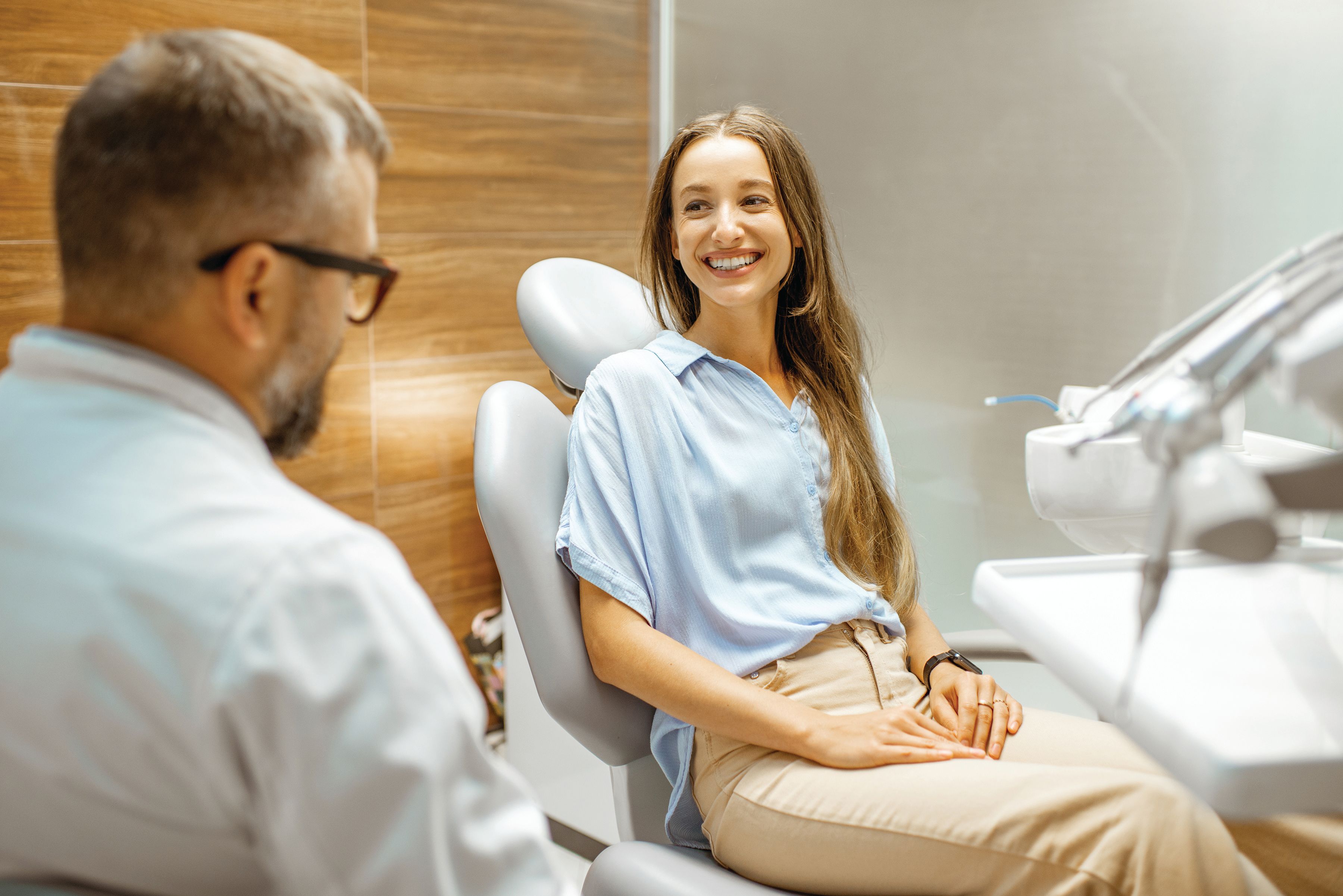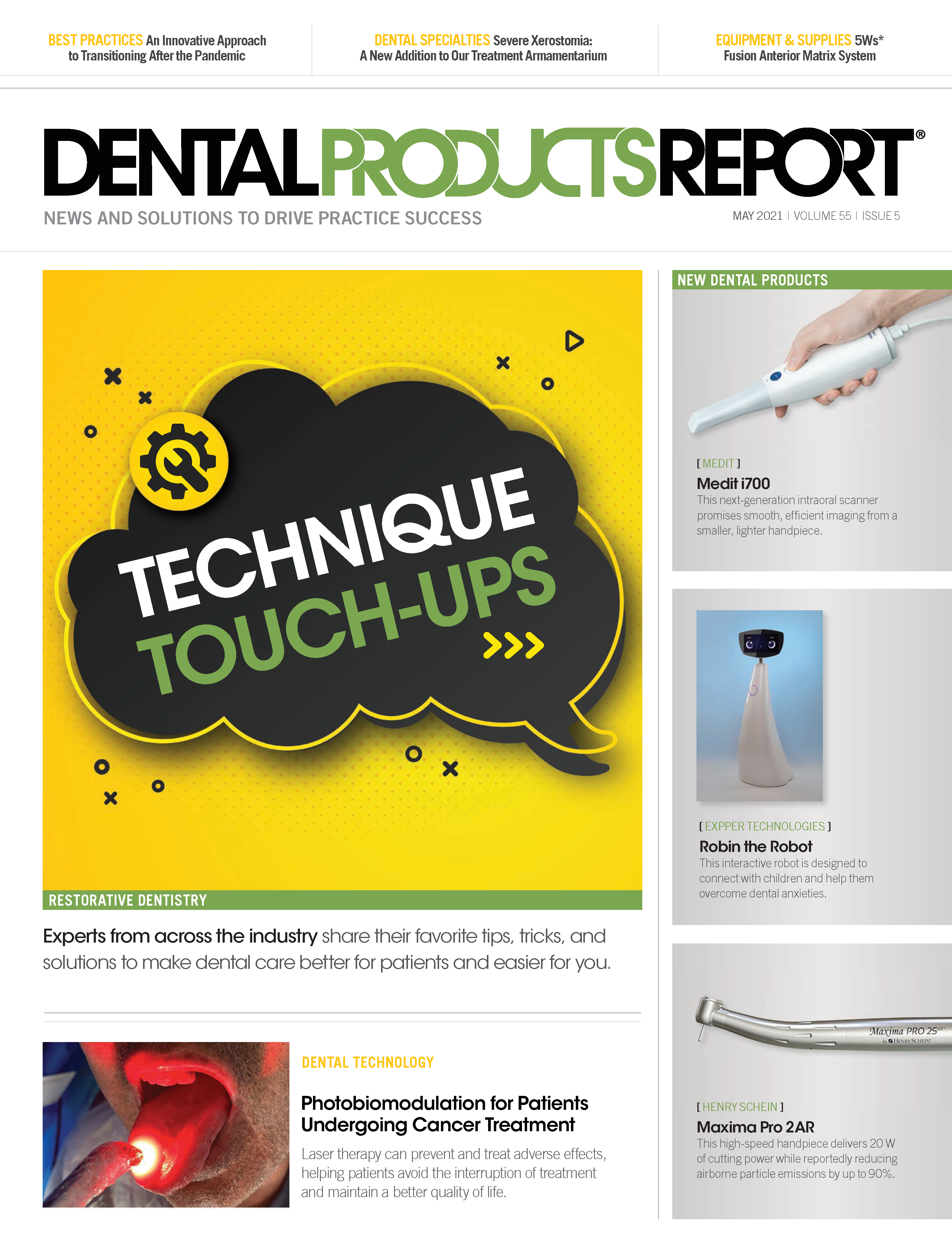Be a Resource, Not Just a Salesperson
One of the dental industry’s behind-the-scenes experts shares her marketing wisdom.
©rh2010 / stock.adobe.com

Innovation is about not just inventing new things but also embracing new ideas. When it comes to innovation in dental marketing, I’ve watched Beth Gaddis work behind the scenes to take every organization she works with to a new level.
Now, as the director of content marketing and social media at Simplifeye, she not only enhances the way Simplifeye engages the dental community but also provides a model for how dentists might engage their patients. She has a fantastic methodology, and this interview is a chance for clinicians to see a different way of driving treatment acceptance.
Lou Shuman: One of the reasons I was fortunate to have a strong conversion rate as an orthodontist is because I didn’t just sell—I educated my patients. What helped you to see Simplifeye as a company that could embrace an educational marketing model?
Beth Gaddis: Simplifeye has so much knowledge based on our founder being an orthodontist and my own background as marketing director for 2 DSOs [dental service organizations]. We can meet people where they are and help them, even if they don’t use our service. That’s where we came up with this idea of creating the Resource Center, which we launched in late January on Simplifeye.com.
It’s about creating resources that are free to the dental community, as well as other verticals as we expand. We want to help them grow their company, regardless of whether they are a Simplifeye customer. We’re offering e-books with subjects such as “KPIs every dentist needs to know” because so many dentists have never taken a business class.
So, we do a lot with specific examples and charts and what other companies are doing that has made them successful. When you read through them, you find this has very little to do with live chat or payments or our other products. It’s more about our philosophy of how dental teams can elevate customer service, patient care, and patient satisfaction. It’s really about showing best practices.
I read results of a survey the other day that said 60% of millennials and Gen Xers dread making a doctor’s appointment—dread is the actual word they used—and another 60% said they hate making phone calls.
I always think of millennials as being young, but it’s anyone born after 1980, so those folks are close to age 40, a key demographic. If [dentists] want to be doing more online, then we need to show them how they can easily do that in order to capture that audience and grow their patient base. We’ve turned a number of our Simplifeye success stories into case studies, which also are available in the Resource Center.
LS: I think many dental professionals do realize, in an intuitive way, that education is more effective than pure sales strategy. If we’re looking at how to translate some of what you’re doing with Simplifeye to what a dentist would apply in their own practice, what do you say to someone who would love to create a resource center on their practice’s website but doesn’t have a full-time marketing person to help make that happen? How can a small practice be creative in its implementation?
BG: If the question is, “How do I create content?” then I’m happy to say they can come to our Resource Center, where we have great ideas [and] tips, as well as a list of 30 blog topics they can do. We provide ideas for free and paid marketing strategies designed to attract new patients.
If dentists wants to train their teams on how to increase case acceptance, then check out our 7 Effective Ways to Increase Case Acceptance e-book. It will take them through how to create a positive experience, how to build an emotional connection, how to identify roadblocks, and even how to deliver the information based on the patient’s personality type. It blew my mind to learn that there are 4 ways to present a case based on the patient’s personality type, and that’s going to determine how they’re going to react to the information that you’re giving them. So, we offer a simple way to identify the patient’s personality type and how dentists can be tweaking the amount of information they’re giving them—all in the service of really connecting with them, getting that “aha!” moment, and moving patients to say yes to the treatment they need.
Especially right now, when dentists may not be going to conferences or don’t have time for a 2-hour webinar, these are quick resources at their fingertips that they can use to train new team members, providing a common educational background for the team.
LS: As you’ve worked with dentists trying out this more educational approach to treatment acceptance, are there common missteps or hurdles you’ve observed?
BG: There are a number of things, but a simple one would be when dentists use the term patients instead of people. When you’re talking to somebody, you should say, “I see a lot of people just like you,” and be intentional about using first names whenever possible.
When I was a marketing director for a group with 173 practices, we launched ortho and had created an entire education campaign. But what we discovered is that if during the initial consult you put a bib around every single person you examine, before you ease them back in the chair, it makes them feel more comfortable—especially the preteen and teenage girls. Even if you’re not going to do any work, the bib puts them more at ease, and that’s body language the parents pick up on.
In this case, it wasn’t just about which orthodontist had the best skills but also about how you made the child feel comfortable. Similarly, we had a questionnaire the teens would fill out about themselves, including their parents’ names. When the doctors started using parents’ names, instead of just saying, “OK, Mom, this is what I’m seeing with your son…” case acceptance went up. People want to do business with people they like and trust.
LS: I think what you’re connecting here is how every small thing—from body language to fields in a questionnaire to using first names—can change how people perceive clinical care. Obviously, a lot has to do with interpersonal dynamics. When it comes to technology that helps support this work, are there tools or platforms that you think dentists should look into?
BG: If you take any part of the patient journey, there are new tools that you can be using and new processes that are very different from what was available even 2 or 3 years ago. I recently read that the [COVID-19] pandemic has caused technology and its adoption to evolve anywhere from 1 to 7 years ahead of where we would have been if the pandemic had not happened. I think it’s important that we recognize that people are much more comfortable with technology—especially conducting certain kinds of business online—than they were a year ago because so many of us have been forced into doing more online.
For example, when I posted on LinkedIn that I had joined Simplifeye, a dentist I met at a conference sent me a message to say that he loved Simplifeye.
Dr Kaufman had started using Simplifeye during the pandemic because, with his front office shut down, he needed a way for people to reach the office in case of emergency. That’s when he implemented live chat. Then, he started utilizing the telehealth function for virtual visits because he needed a way to quickly determine whether it was an emergency: Did they need to come in? Could it be postponed? Did the patient need antibiotics?
Even after the office reopened, he continued to use video visits, especially for his Invisalign cases. People want to limit the number of office visits they’re making, and this is a way he can see them. And there was another thing he found, which I had never thought about: For patients who had a big case coming up, he would call them the night before to say that he was looking forward to meeting with them; he would do a 5-minute video chat, no mask, and create a stronger dentist/patient bond.
With the goggles, [personal protective equipment], double-layered masks, gloves, and more, it can be difficult to make a human connection. The video visits put people at ease, reduced no-shows, and increased case acceptance. Pandemic or not, that’s now a best practice.
Another innovation COVID-19 helped spur on is chairside payment. How many times have you had a patient accept treatment while in the chair and you say, “Fantastic, I’m going to walk you up to the front”? Maybe they have to wait a few minutes and in that short time, they change their mind. With Simplifeye, we have Payments, a wireless transaction processor that allows them to pay without having to get up. They can agree to treatment notes and swipe the card right there; it eliminates friction. For COVID-19 protocols, it prevents a line of people waiting at the front, and, more importantly, it makes a critical process easier for the patient.

How Dentists Can Help Patients Navigate Unforeseen Dental Care
December 12th 2024Practices must equip patients with treatment information and discuss potential financing options before unexpected dental treatments become too big of an obstacle and to help them avoid the risk of more costly and invasive procedures in the future.
Product Bites – September 15, 2023
September 15th 2023With half-a-dozen new products, this is a busy week for Product Bites. This week we feature the debuts of ClinicCAD from Medit, Multi-Unit Abutments from Neoss Group, CURIE Plus from Ackuretta, Samba robotic toothbrush from CURAPROX, Remedo AI website design, and the CA 1:2.5 Micro-Series handpiece attachment from Bien Air. [6 Min]